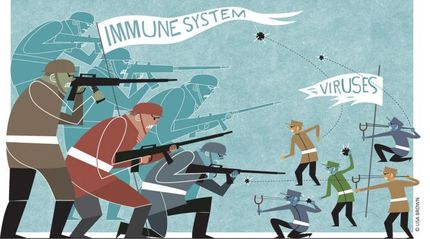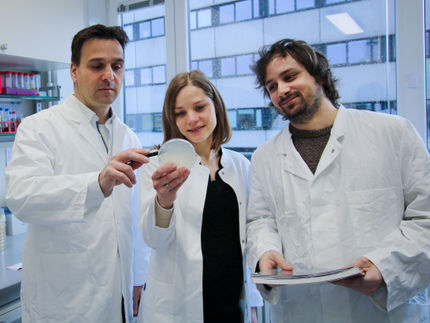New light shed on key bacterial immune system
New insights into a surprisingly flexible immune system present in bacteria for combating viruses and other foreign DNA invaders have been revealed by researchers from New Zealand's University of Otago and the Netherlands.
A team led by Dr Peter Fineran of the Department of Microbiology and Immunology are studying the genetic basis of adaptive immunity in bacteria that cause potato 'soft rot' and in E. coli bacteria. Through their recent collaboration they have found that these bacterial immune systems are much more robust and responsive than previously thought.
Their latest findings, which appear in the leading US journal PNAS, have implications for improving our understanding of bacterial evolution, including the spread of antibiotic resistance genes.
The researchers are investigating an adaptive immune system, termed CRISPR-Cas, which is found in half of all bacterial species and in almost all single-celled microbes in the archaea domain.
CRISPR-Cas's role in providing immunity was only discovered in the past decade. The system creates a genetic memory of specific past infections by viruses and plasmids, which are small mobile DNA molecules that can move between organisms.
Dr Fineran says the system steals samples of the invader's genetic material and stores them in a memory bank so it can immediately recognise future exposures and neutralise the attack. It can store up to 600 samples and can also pass on these memories to subsequent generations of bacteria.
It had been thought that the system had an Achilles heel because invaders that had acquired too many mutations could no longer be recognised as they did not match the stored sample closely enough.
"What we have now discovered is that while the viruses and plasmids can evade direct recognition by acquiring multiple mutations, the system is primed to quickly generate a new immunity by grabbing a new sample of the mutated genetic material."
"It's a remarkably flexible and robust immune system for such simple single-celled organisms."
Dr Fineran says the system reflected the ancient and continuing co-evolutionary arms race between bacteria on one side, and viruses and plasmids on the other.
Viral infections of bacteria also exert a powerful yet invisible effect on the entire planet, says Dr Fineran.
"Their silent but vast and ongoing war underpins everything from how global nutrient cycles—which rely on bacteria to produce half of the Earth's biomass —operate, to how human pathogens evolve," he says.
"For example, the bacteria that cause cholera and diphtheria have been infected by viruses that provide genes coding for toxins, which converted these bacteria into significant human pathogens."
Plasmids are also key players in moving antibiotic resistance genes between different bacterial species.
"So, discovering more about exactly how bacterial immune systems combat plasmid transfer and acquisition is of considerable interest," he says.
Topics
Organizations
Other news from the department science

Get the life science industry in your inbox
By submitting this form you agree that LUMITOS AG will send you the newsletter(s) selected above by email. Your data will not be passed on to third parties. Your data will be stored and processed in accordance with our data protection regulations. LUMITOS may contact you by email for the purpose of advertising or market and opinion surveys. You can revoke your consent at any time without giving reasons to LUMITOS AG, Ernst-Augustin-Str. 2, 12489 Berlin, Germany or by e-mail at revoke@lumitos.com with effect for the future. In addition, each email contains a link to unsubscribe from the corresponding newsletter.



















































